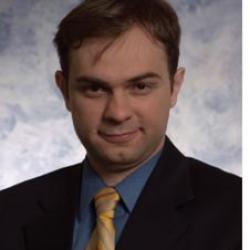
Current congestion of radio spectrum by licensed users and the increasing demand for new devices has created the need for alternative methods for usage of the radio spectrum. Licensed primary users can be inactive for a specific time, leaving their allocated frequency band unoccupied, which can be used by secondary users. “White space” detection Cognitive radio (CR) devices are smart secondary users that are able to function properly when the primary users are inactive through dynamic spectrum access (DSA). The CR spectrum sensor is responsible for detecting the white spaces and reporting them to the transmitter.
Spectrum sensing can also be useful for interferer detection. For wideband (WB) applications with low spectral density emission compared to nearby narrowband (NB) systems, these NB systems act as blockers, and detecting interferers and reporting them to the WB receiver can enhance the WB system robustness using dynamic notch filtering. While the main driver for spectrum sensing techniques is CR, there are wider applications including intelligent radar systems, and low-cost measurement equipment such as spectrum analyzers and oscilloscopes.
This talk is about the realization of novel CMOS spectrum sensors based on the concept of dispersion frequency time mapping for both white space and interfere detection. A phaser is a dispersive delay structure (DDS), which has a specific group-delay (GD) characteristics. It can convert the frequency difference of the incoming RF signal to time difference and can discriminate channels in the time domain creating a straightforward scenario for a real-time spectrum sensor. CMOS implementation and measurements will be presented.
Prof. Entesari was a recipient of 2017 Qualcomm Faculty Award and 2011 National Science Foundation CAREER Award. He was a co-recipient of the 2009 Semiconductor Research Corporation Design Contest Second Project Award, the Best Student Paper Award of the IEEE RFIC Symposium in 2014 (second place), the IEEE Microwave Theory and Techniques Society in 2011 (third place), and the IEEE AP-S in 2013 (Honorable Mention). He is an associate editor of the IEEE Microwave and Wireless Components Letters, a member of editorial board for IEEE Solid-State Electronics Letters and a technical program committee member of the IEEE IMS and RFIC Symposiums.
grebeiz@ucsd.edu
